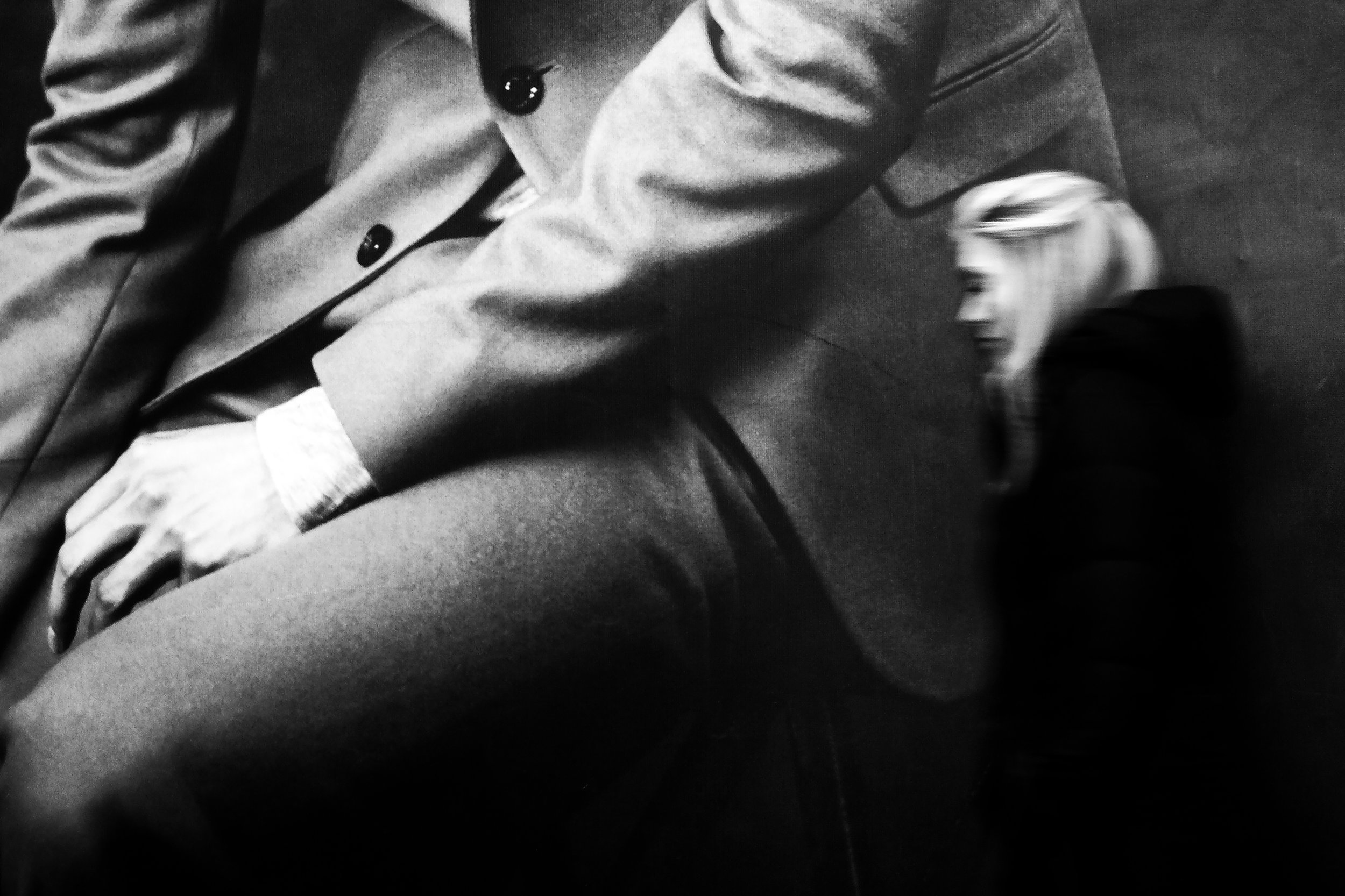Viewing a photograph means to face form and feeling at once, and at times it is not easy to read the shapes without our understanding to take over. Letting go of rational anticipation can be a way to attune ourselves to Melissa Breyer’s series True Stories in order to see form and sentiment becoming one and originating multiple significances. The result is a series that challenges the very genre it belongs to.
Breyer lives in New York City, where she writes, makes photographs, thinks about making photographs, and dreams about making photographs. More simply, we could just say that Breyer makes street photography, because this is what her work has been called before, and because she does photograph people on the streets of her city: it is street photography because that is objectively what it is. If this categorization feels inadequate, it is because True Stories touches something impalpable and yet more relevant, something that demands a personal reading. “There are millions of cameras getting the documentary part of urban life now” she says, “I’m more interested in expressing how it feels. The city is endlessly atmospheric and wildly abstract when the brain drops its expectations of what the eyes are seeing.” The cornerstone of the street photography is the photographer’s ability to recognize and play with a moment to achieve a personal view of reality. Breyer goes further, embracing the light and scale of her surroundings, blending the urban environment with human presence in a way that often appears supernatural; this wondrous aesthetic makes her “street photography” into something else entirely.
Many of her images contain zones of shadow—mysterious presences and uneasy atmospheres. Men and women stand still for a second, lost in thought or in a dream, unconsciously part of a moment of timeless metropolitan beauty. The fact that New York’s steam pipes provide the city with iconic clouds-on-earth, of course, contributes to the creation of this unique atmosphere; but that is the only artifice. Breyer’s work creates scenes where “that which appears true can be false, and that which appears too strange to be real, is actually true.”
There is nothing objective here to see, and the related what-s, when-s, why-s, and where-s are practically irrelevant to the viewer’s interpretation. Even New York City is not treated as the main character: Breyer doesn’t seek exotic locations but rather concentrates on the expansion of a moment that could occur in any big city. Through her lens, she casts a figurative and graphic spell, calibrated to ask only the important questions: What do you see? The answer is revealed in “the fiction that follows as each viewer sees the photo and creates their own story,” she explains.
Breyer refers to the whole set of her photographs as “true stories.” The fact that the adjectives “candid” and “true” belong to the same semantic area is a statement of honesty—yet Breyer is aware of how delicate the concept of truth is, especially in photography: “By its nature, non-manipulated candid photography shows the truth, but really, the truth is incredibly limited. In a photo, we have the basics of a scene as described by an arrangement of light on film, but it is so out of context that it can really only convey the truth of that split second; all the rest is conjecture. The photo becomes a starting point for all the stories that didn’t really happen.”
These stories are made by explainable elements, but their interaction, as caught by Breyer’s camera, transcend these origins, revealing the magical qualities of her own city. “Our brains often veto our eyes in order to make sense of the world. For instance, our brain generally tells our eyes to look through a window and to ignore the wonderful cacophony of reflections on its surface,” she says. By focusing on this wonderful cacophony, Breyer invites our eyes to take charge and to be rewarded with a new perspective of the people that she photographs.
Breyer uses her camera as a magnifying glass on a timeline, revealing the cracks where reality starts to crumble, allowing the viewer to peep into a parallel dimension where light and shadow synchronize in harmonic proportion, suggesting that truth and artifice coexist. “In the end, all the photos in this body of work are true stories,” says Breyer, “but stories told in a medium in which truth is a very fluid thing.
Helena Falabino is an Italian-Argentinian photographer and writer based Torino, Italy.
This article first appeared in Issue 9.






